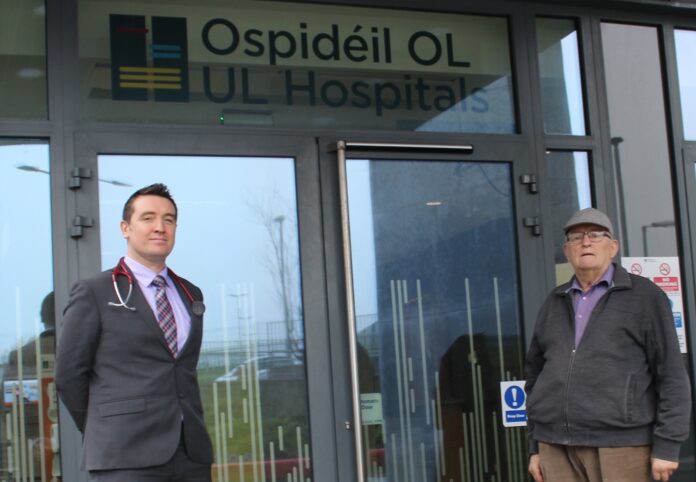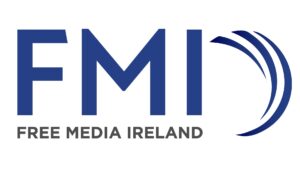THE Cardiology Department at University Hospital Limerick (UHL) continues to improve patient services with the successful implantation of a subcutaneous ICD (implantable cardioverter-defibrillator).
In what is believed to be the first procedure of its type carried out in a public hospital in Munster, 74-year-old patient Joseph O’Neill from Moyasta, County Clare, was treated in October by Dr Stephen Tuohy and team in the cath lab in UHL.
Himself a native of County Clare, Dr Tuohy has recently taken up a post as consultant cardiologist at UL Hospitals Group.
“This implant is still a relatively new technology and has particular advantages over transvenous devices in certain patients” explained Dr Tuohy.
“Essentially an ICD is a small implantable battery-powered device that can deliver a shock to the heart to somebody who has a life-threatening heart rhythm such as ventricular fibrillation or ventricular tachycardia. In this way, we can restore a normal heart rhythm as and when required and the device continuously monitors the patient to look out for those potentially dangerous heart rhythms.”
Transvenous ICDs have been used for many years. This intervention involves electrical leads being placed through a vein and into the heart. The more recently developed subcutaneous ICD technology allows for a regular heart rhythm to be restored without the need for the leads to touch the heart itself.
This can reduce potential complications in the long term. It also means a simpler and less invasive procedure for patients if the device system ever needs to be removed.
“In certain cases we may recommend an ICD for a patient who is at risk of going into a rapid, life threatening heart rhythm. Most commonly we would be recommending such a device for older patients but also for younger patients with certain cardiac conditions,” said Dr Tuohy.
“Most commonly, ICDs have been transvenous but now with advent of this new technology we have the option of placing an ICD without any device actually touching the heart. This procedure is entirely subcutaneous, which means under the skin. While this option is not suitable for all patients who need an ICD, it is a preferable option in certain situations.”
“We are delighted that this procedure is now available here in UHL for patients in the Midwest and we look forward to advancing more technologies and interventions for cardiology patients in the region,” Dr Tuohy said.
Originally from Lahinch in County Clare, Dr Tuohy was appointed as consultant cardiologist in University Hospital Limerick in September 2020. He practised as a cardiologist and associate professor in Portland, Maine in the USA for two years prior to the current appointment.
Dr Tuohy completed a cardiac electrophysiology fellowship through the Cleveland Clinic Foundation in Ohio, USA, after a period of cardiac electrophysiology research at the Mater Hospital in Dublin and undergoing specialist training in medicine and cardiology with the Royal College of Physicians of Ireland.
Dr Tuohy has a medical degree, bachelor of science and master of science from NUI Galway. He also holds a doctorate in medicine from UCD and was awarded the Cormac Trust Research Fellowship Grant for his research on sudden cardiac death in Ireland.
Special interests include the management of heart rhythm disorders, the implantation and management of cardiac devices such as pacemakers and defibrillators, the management of individuals at high risk for arrhythmias, and the implantation of devices to prevent stroke in certain atrial fibrillation patients.











